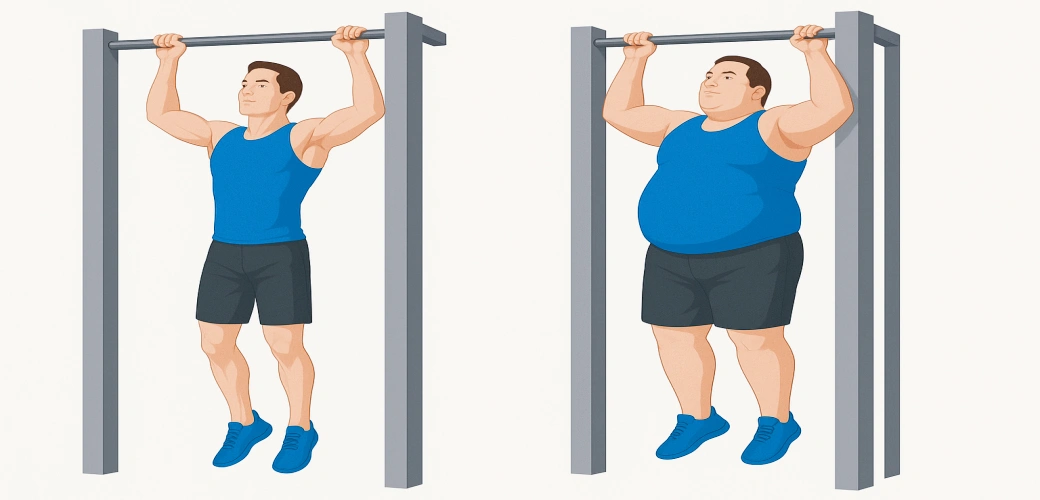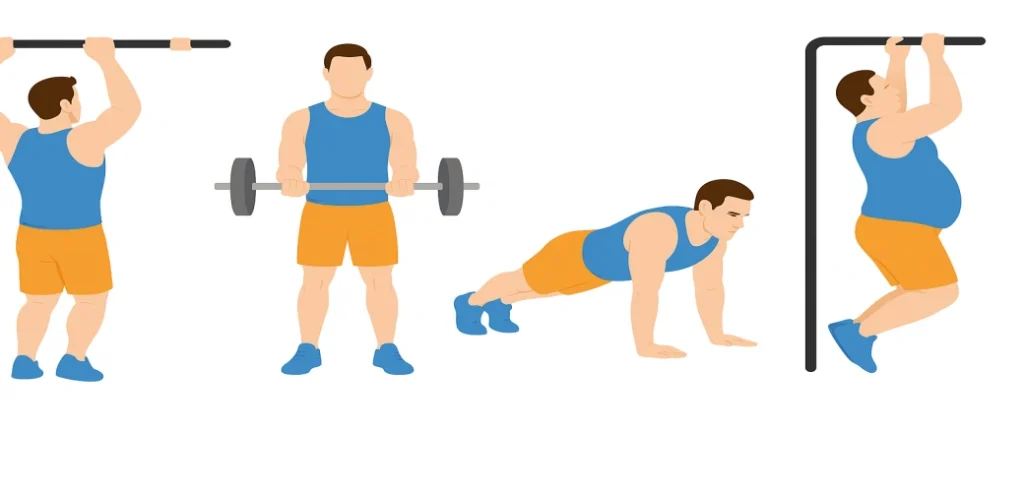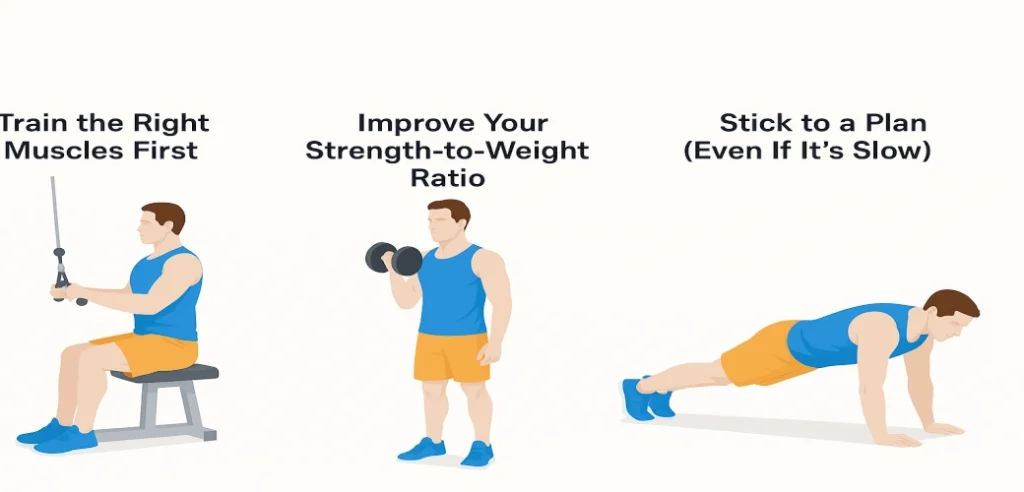
Are pull ups harder if you weight more? Yes, they are. If you weigh more, you have to lift more. That makes pull-ups tougher.
Pull-ups rely on your own weight. So if you’re heavier, your body gives your muscles a bigger job.
Think about it this way: someone at 150 pounds has less to pull than someone at 220. The move doesn’t change — but the challenge does.
Muscle weight can help, since strong muscles support the pull. But if the weight comes mostly from fat, it makes pull-ups much harder.

Pull-ups feel tougher when you gain weight — and it’s not only about the extra pounds. A few things in your body work against you and raise the difficulty. Using a pull up machine can help, but several physical factors still make the movement more demanding.
Here’s why:
🔹 1. Your Muscles Have to Work Harder
Pull-ups use multiple muscle groups at once:
When your weight increases, every rep puts more stress on these muscles. The more you weigh, the more force your body has to generate.
🔹 2. Relative Strength Matters
It’s not just about how strong you are — it’s about how strong you are for your size.
This is called relative strength, and it’s a key factor in bodyweight training.
🔹 3. More Core Control Is Needed
With more body mass, especially around the midsection, your core has to work harder to:
Without strong core engagement, the movement becomes inefficient and even harder to complete.
🔹 4. Gravity Doesn’t Care
No matter where your weight comes from — fat, muscle, or both — gravity pulls it all down the same way. Every pound counts when you’re fighting against it.
Yes, it makes a big difference. Here’s how muscle and fat affect your pull-up performance:
| Aspect | Muscle | Fat |
|---|---|---|
| Adds strength for pull-ups | ✅ Yes — especially if it’s in your back, arms, and core | ❌ No — fat doesn’t contribute to pulling power |
| Increases total bodyweight | ✅ Yes, but the added weight is functional | ✅ Yes, and the weight is non-functional |
| Helps with body control | ✅ Supports stability and form | ❌ Can make the body harder to control, especially during reps |
| Improves performance | ✅ Higher muscle mass can make pull-ups easier | ❌ Higher fat mass usually makes pull-ups harder |
| Affects relative strength | ✅ Boosts strength-to-weight ratio (if balanced) | ❌ Lowers your relative strength |
So if you want to improve your pull-ups, focus less on the number on the scale — and more on what that weight is made of.
If you’re heavier and struggling with pull-ups — you’re not alone. And no, it’s not just you. Heavier body makes pull-ups a bigger challenge. Still, it’s something you can work through — step by step.

Here’s how to make real progress — no matter your size:
🔹 Train the Right Muscles First
You won’t master pull-ups just by doing them. Start by training the key muscle groups that support the movement:
Train these 2–3 times per week as part of your routine.ull-ups.
🔹 Improve Your Strength-to-Weight Ratio
Better pull-ups come from increasing strength and managing bodyweight:
Small changes here make a big difference in pull-up performance.
🔹 Stick to a Plan (Even If It’s Slow)
Consistency wins. Set a routine:
Pull-ups are hard. A heavier body just adds to the fight. But you can still win.
Start with smart technique, build strength, and take your time. Using pull up machine weight can help reduce the load so you can train with good form. One rep at a time — you’ll get better.

I’m Max Lane, a dedicated fitness professional and the content strategist behind Inpek Fitness. With over ten years of hands-on experience in the fitness and gym equipment industry, I bring a practical and insightful perspective to every article I write. My background in strength training and commercial gym solutions allows me to dive deep into the mechanics and benefits of Pin Loaded Machines, Plate Loaded Machines, Multi Function Gym Machines, Gym Multi Stations, and Free Weights. Whether you’re managing a fitness facility or striving to improve your own performance, my goal is to deliver clear, actionable insights that help you succeed. Outside of writing, I’m passionate about weightlifting, staying active, and discovering new ways to push the boundaries of modern fitness.
Looking to enhance your gym with premium equipment? Have inquiries or ideas? Complete the form below to engage with our expert team. We’ll work with you to realize your fitness facility goals efficiently and effectively.